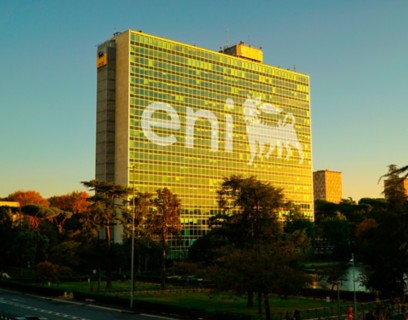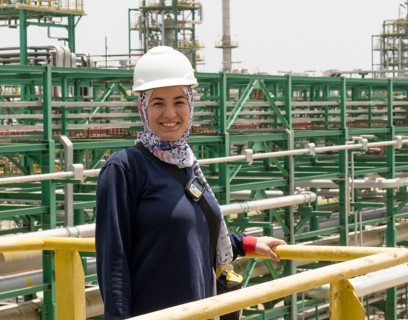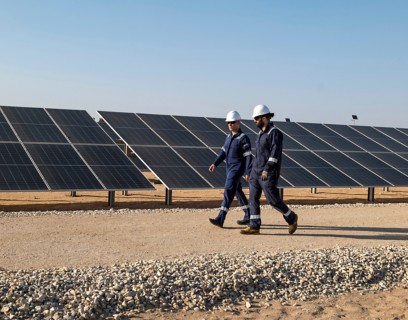Our power plants
Thermoelectric power generation and district heating.

Plants
The registered office for Enipower and its subsidiaries is located at the Eni Management Centre in San Donato Milanese. All Enipower's thermoelectric plants are located in Italy, at six production sites: Brindisi, Ferrara, Ferrera Erbognone (PV), Mantua, Ravenna and Bolgiano (MI). Management of the plants in Ferrara and Mantua is entrusted to the subsidiary companies Sef and Enipower Mantova, respectively.
Bolgiano
The plant is located in Bolgiano, in the municipality of San Donato Milanese, and was built in the early 1980s to meet the electricity and heating needs of Eni's offices and the town. The Bolgiano plant supplies the district heating network of the city of San Donato Milanese, which today extends for around 35 kilometres. Winter heating is provided to approximately five million cubic metres of users. The heat is also used for summer cooling of approximately one million cubic metres through refrigeration-absorption units. The electricity distribution network consists of a system of cable ducts and substations which, starting from the Bolgiano power plant, distribute the electricity needed to meet the requirements of the Eni Group companies.
Brindisi
The plant, which is part of the Brindisi petrochemical hub, is located in the suburbs and overlooks the Adriatic Sea. The plant consists of four production units, three of which are combined cycle (CTE3) and one consisting of four turbo-generators directly fed with steam recovered from the adjacent Versalis cracking plant (CTE Nord). The electricity produced is fed into the IUN (Internal User Network that supplies the companies at the plant), which is connected to the national transmission grid. The technological steam and demineralised water produced are supplied to the subsidiaries’ plants. The new reverse osmosis plant for the production of demineralised water minimises the use of water resources and energy consumption.
Ferrera Erbognone
The Ferrera Erbognone plant is located in the agricultural area of Lomellina, in the province of Pavia, next to the Eni refinery in Sannazzaro de' Burgondi. Opened in May 2004, it was the first plant built in Italy following liberalisation of the electricity market. The plant consists of three combined-cycle production units, two fed by natural gas, the third normally fed by syngas (or synthesis gas) with natural gas integration. Syngas is produced in the refinery's gasification plant, using the heavy hydrocarbons from the distillation of crude oil, with a technology that provides for the segregation of the pollutants present, in particular sulphur, ash and metals.
Mantua
The Enipower Mantova plant, 86.5% owned by Enipower SpA and 13.5% by Mantua-based multi utility T.E.A., is part of the chemical hub located about 5 kilometres from the city of Mantua. The power station, fed by natural gas, consists of two combined-cycle units and a conventional unit (B6), normally used as a reserve for steam production. The electricity produced is fed into the IUN (Internal User Network that supplies the companies on the site), which is connected to the national transmission grid via a 380 kV power line and a 220 kV line. Part of the steam produced by the recovery generators is used by the plants on the petrochemical site and by the city's district heating.
Ravenna
TestoThe power plant is located on the Ravenna petrochemical site, an industrial area of around 270 hectares, about 4.5 kilometres from the city centre. The surrounding area, particularly the coastal area and the immediate hinterland, is notable for its numerous wetlands and pine forests. The power station consists of two production sections, fed by natural gas.
Ferrara
The Enipower Ferrara (Sef) company is controlled by Enipower (51%), with electricity company Axpo International S.A. as a minority shareholder. The plant is integrated in the Ferrara petrochemical hub, which is connected to the industrial areas of Ravenna and Mantua for the exchange of raw materials and intermediate products. It consists of two combined cycle production units fed by natural gas and a cold reserve boiler. The electricity produced is fed into the IUN (Internal User Network supplying the companies on the site), which is connected to the national transmission grid with a 380 kV power line and a 130 kV line. The plant is equipped with a clarification plant and a demineralisation plant for water taken from the River Po.
Bolgiano
Bolgiano
The plant is located in Bolgiano, in the municipality of San Donato Milanese, and was built in the early 1980s to meet the electricity and heating needs of Eni's offices and the town. The Bolgiano plant supplies the district heating network of the city of San Donato Milanese, which today extends for around 35 kilometres. Winter heating is provided to approximately five million cubic metres of users. The heat is also used for summer cooling of approximately one million cubic metres through refrigeration-absorption units. The electricity distribution network consists of a system of cable ducts and substations which, starting from the Bolgiano power plant, distribute the electricity needed to meet the requirements of the Eni Group companies.
Brindisi
Brindisi
The plant, which is part of the Brindisi petrochemical hub, is located in the suburbs and overlooks the Adriatic Sea. The plant consists of four production units, three of which are combined cycle (CTE3) and one consisting of four turbo-generators directly fed with steam recovered from the adjacent Versalis cracking plant (CTE Nord). The electricity produced is fed into the IUN (Internal User Network that supplies the companies at the plant), which is connected to the national transmission grid. The technological steam and demineralised water produced are supplied to the subsidiaries’ plants. The new reverse osmosis plant for the production of demineralised water minimises the use of water resources and energy consumption.
Ferrera Erbognone
Ferrera Erbognone
The Ferrera Erbognone plant is located in the agricultural area of Lomellina, in the province of Pavia, next to the Eni refinery in Sannazzaro de' Burgondi. Opened in May 2004, it was the first plant built in Italy following liberalisation of the electricity market. The plant consists of three combined-cycle production units, two fed by natural gas, the third normally fed by syngas (or synthesis gas) with natural gas integration. Syngas is produced in the refinery's gasification plant, using the heavy hydrocarbons from the distillation of crude oil, with a technology that provides for the segregation of the pollutants present, in particular sulphur, ash and metals.
Mantua
Mantua
The Enipower Mantova plant, 86.5% owned by Enipower SpA and 13.5% by Mantua-based multi utility T.E.A., is part of the chemical hub located about 5 kilometres from the city of Mantua. The power station, fed by natural gas, consists of two combined-cycle units and a conventional unit (B6), normally used as a reserve for steam production. The electricity produced is fed into the IUN (Internal User Network that supplies the companies on the site), which is connected to the national transmission grid via a 380 kV power line and a 220 kV line. Part of the steam produced by the recovery generators is used by the plants on the petrochemical site and by the city's district heating.
Ravenna
Ravenna
TestoThe power plant is located on the Ravenna petrochemical site, an industrial area of around 270 hectares, about 4.5 kilometres from the city centre. The surrounding area, particularly the coastal area and the immediate hinterland, is notable for its numerous wetlands and pine forests. The power station consists of two production sections, fed by natural gas.
Ferrara
Ferrara
The Enipower Ferrara (Sef) company is controlled by Enipower (51%), with electricity company Axpo International S.A. as a minority shareholder. The plant is integrated in the Ferrara petrochemical hub, which is connected to the industrial areas of Ravenna and Mantua for the exchange of raw materials and intermediate products. It consists of two combined cycle production units fed by natural gas and a cold reserve boiler. The electricity produced is fed into the IUN (Internal User Network supplying the companies on the site), which is connected to the national transmission grid with a 380 kV power line and a 130 kV line. The plant is equipped with a clarification plant and a demineralisation plant for water taken from the River Po.
District heating
The decision to adopt district heating technology powered by large natural gas cogeneration plants has resulted in switching off numerous less efficient household boilers, guaranteeing benefits for the environment in terms of air quality and reduced CO2 emissions. The district heating service is supplied by two plants:
- the co-generation plant in Bolgiano: feeds the network in San Donato Milanese, serving about 25,000 inhabitants;
- the combined cycle plant in Mantua: feeds the network managed by TEA, serving the equivalent of about 50,000 inhabitants.
Enipower
The Eni company dedicated to the production of electricity and steam.


















